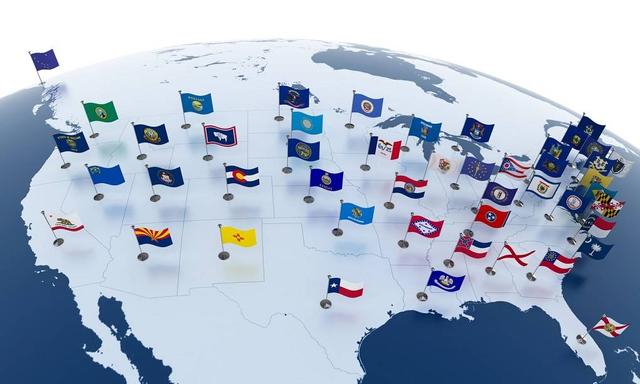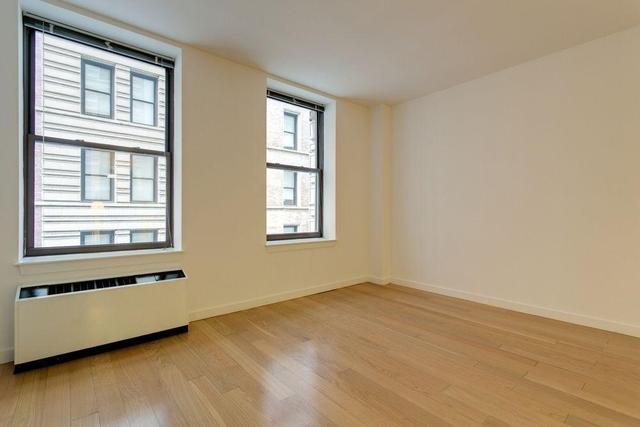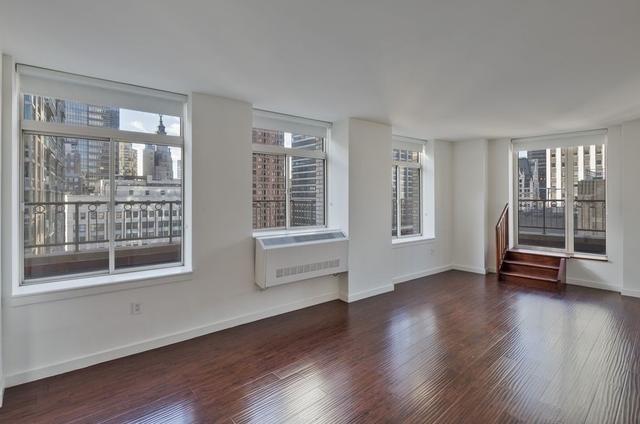
13 Most Expensive States to Live in USA
By: ROS Team
Have you ever wondered why the cost of living varies so dramatically across the United States? Each of the 50 states has its own unique culture, climate, and economic dynamics, which shape their living expenses. It’s no surprise that certain regions—particularly the West Coast and Northeast—are notoriously pricey.
From housing and utilities to taxes and transportation, several factors contribute to the financial realities of living in these states. In this article, we will unveil the most expensive states to live in USA and uncover the reasons behind their sky-high costs.
Our Methodology
To identify America’s most expensive states, we analyzed various data points, including cost-of-living indexes, housing costs, utility expenses, tax rates, and average income levels. We also reviewed recent reports from reputable sources such as the U.S. Census Bureau, Statista, and industry-specific organizations to ensure accuracy and relevance.
Additionally, we considered unique factors like natural disaster risks, transportation costs, and healthcare expenses, which significantly impact living costs in each state.
Important: To put things into perspective, the average cost of living index across the U.S. is set at 100, serving as a baseline for comparison. The average home price nationwide is $357,469, while the average rent stands at $1,560 per month. The median household income across the country is $78,538.
Top 13 Most Expensive States to Live in USA
1. Hawaii
- Cost of Living Index: 179
- Median Home Price: $842,181
- Median Rent: $1,486
- Median Household Income: $98,317
- Income Tax: 11%

Hawaii stands as the most expensive state to live in the U.S., with a cost of living 79% higher than the national average. Housing is particularly costly, as the average price of a single-family home in Maui County exceeds $1 million, largely due to a persistent housing shortage. Taxes add to the financial burden, with Hawaii imposing some of the highest income and tourism taxes in the nation.
Living on an island also means higher costs for goods, as nearly everything needs to be shipped in. Energy expenses are another significant factor, with Hawaiians paying the highest energy bills in the country—averaging between $378 and $393.87 per month, compared to the national average of $146.80.
Additionally, as per Statista, Hawaii’s state and local government debt exceeds $16 billion, a financial strain that often results in higher taxes.
2. Massachusetts
- Cost of Living Index: 148.4
- Median Home Price: $625,065
- Median Rent: $2,339
- Median Household Income: $101,341
- Income Tax: 5%

Massachusetts ranks as the second most expensive state to live in the USA, surpassing even California. The Bay State’s high cost of living is driven by elevated prices for goods and services, including groceries, healthcare, and transportation. Utility costs are particularly steep, with electricity, natural gas, and heating expenses among the highest in the nation—a challenge made worse by harsh New England winters.
Adding to the expense is Massachusetts’ reputation as a hub for prestigious universities and top-tier hospitals, which drives up the cost of education and medical services.
On the bright side, the state boasts a high median household income of $101,341, reflecting its strong job market and economic opportunities. Despite these advantages, the cost of living in Massachusetts remains one of the highest in the country.
3. California
- Cost of Living Index: 134.5
- Median Home Price: $778,355
- Median Rent: $1,830
- Median Household Income: $96,334
- Income Tax: 13.3%

California’s cost of living is 35% higher than the national average, making it the third most expensive state in the U.S. The Golden State’s desirability, driven by abundant job opportunities in cities like Los Angeles, San Francisco, and San Diego, creates intense competition for housing, pushing prices even higher.
Energy costs are another significant expense. California’s electricity rates are up to three times higher than those in other states, and California’s vast size and varied geography contribute to these elevated prices.
Food costs are also high, ranking California 10th in the nation for grocery expenses. Additionally, commuting in California can strain budgets, as fuel and vehicle-related costs quickly add up.
4. New York
- Cost of Living Index: 125.1
- Median Home Price: $481,904
- Median Rent: $3,856
- Median Household Income: $84,578
- Income Tax: 10.9%

New York is the fourth most expensive state in the country, driven by its desirability and high housing demand. Limited space, especially in New York City, makes it challenging to construct new housing, keeping rents and property prices sky-high.
The median rent in the Empire State is an astonishing $3,856, and property taxes are more than double the national average.
Beyond housing, everyday expenses like groceries, transportation, and dining are significantly higher than in most other states. The cost of living is particularly steep in urban areas like Manhattan and Brooklyn, where residents often pay a premium for proximity to cultural hubs, job opportunities, and vibrant city life.
5. Alaska
- Cost of Living Index: 124.4
- Median Home Price: $368,473
- Median Rent: $1,274
- Median Household Income: $89,336
- Income Tax: No Personal Income Tax

Alaska’s remoteness and unique geography make it one of the most expensive states to live in. Due to the state’s limited highway connections, most goods, including groceries, gasoline, clothing, and construction materials, must be shipped or flown in, significantly inflating prices. Utilities are also costly, driven by harsh weather conditions and the challenges of energy delivery in remote areas.
Transportation expenses further add to the cost of living, as limited road connectivity often necessitates reliance on air travel or ferries between towns. Additionally, limited competition in the market keeps prices higher across various sectors.
Despite these challenges, Alaska offers a decent median annual income of $89,336, which helps offset some of the residents’ expenses. However, the cost of living in “The Last Frontier” remains steep due to its isolation and unique lifestyle demands.
6. Maryland
- Cost of Living Index: 119.5
- Median Home Price: $419,042
- Median Rent: $1,655
- Median Household Income: $101,652
- Income Tax: 5.7%

Maryland’s location and economic ties make it one of the most expensive states in the U.S. The Old Line State benefits from its proximity to Washington, D.C., one of the most powerful political and economic hubs in the world. This prime location, along with a growing population and numerous military, industrial, and tech centers, drives up living costs.
Housing in Maryland is notably expensive, with a median home value of $419,042, reflecting the high rate of homeownership among its residents. Areas closer to D.C. or metro stops command even higher prices due to the demand for convenient access to the capital.
Many Maryland residents commute to D.C. for government and other high-paying jobs, further fueling the housing demand and increasing overall living costs.
7. Washington
- Cost of Living Index: 115.1
- Median Home Price: $589,272
- Median Rent: $2,277
- Median Household Income: $94,952
- Income Tax: No Personal Income Tax

Washington’s cost of living sits 15% above the national average, with cities like Seattle being especially pricey. According to a study by Lending Tree, raising a child in the state is among the most expensive in the nation, costing an average of $28,116 annually.
Housing costs are also steep. The average monthly mortgage is $1,854, well above the national average of $1,321.
Utilities in Washington add to the expense, averaging $389 per month compared to the national average of $351. According to DoxoINSIGHTS, residents allocate about 37% of their income to household expenses, including rent, utilities, and insurance.
However, Washington offers some relief with no state income tax, which can help offset the state’s high living expenses for some residents.
8. Oregon
- Cost of Living Index: 115.1
- Median Home Price: $492,822
- Median Rent: $1,464
- Median Household Income: $80,426
- Income Tax: 9.9%

Oregon’s stunning natural beauty comes with a high price tag. According to CNBC, Beaver State is the third most expensive state to live in, behind California and Hawaii.
The average home price is $492,822, significantly above the national average. In sought-after areas like Hood River, prices soar to $701,036. This housing affordability crisis has contributed to a rise in homelessness, with a 22% increase in people experiencing homelessness between 2020 and 2022—the second-highest jump in the nation.
Transportation costs in Oregon are also among the highest in the country. Residents face elevated gasoline prices and annual transportation expenses ranging from $5,316 to $15,073.
9. New Hampshire
- Cost of Living Index: 115
- Median Home Price: $477,813
- Median Rent: $1,776
- Median Household Income: $95,628
- Income Tax: No Personal Income Tax
Despite its “Live Free or Die” motto, New Hampshire is the ninth most expensive state to live in the U.S. High costs in utilities, housing, and transportation make life in the Granite State particularly pricey.
While residents benefit from no personal income tax and no sales tax, the state offsets this with the 3rd-highest property tax rates in the nation, averaging 1.61%.
Housing costs in New Hampshire are substantial, with the typical home price at $477,813. Healthcare is another financial burden, costing residents an average of $8,623 annually—over $1,600 more than the national average.
10. Vermont
- Cost of Living Index: 114.9
- Median Home Price: $388,745
- Median Rent: $1,788
- Median Household Income: $78,024
- Income Tax: 8.7%

Vermont’s picturesque landscapes and charming small towns come at a high cost. Utility expenses form a significant part of living costs in the Green Mountain State. Its harsh winters and muddy springs drive up heating and maintenance bills, contributing to above-average utility costs.
Internet expenses are also steep, with the average monthly bill at $134, making it one of the most expensive states for connectivity.
Housing further inflates the cost of living, with average rent at $1,788, which is higher than many other states. Vermont’s limited housing stock and the appeal of its tranquil environment to out-of-state buyers put additional pressure on prices.
11. New Jersey
- Cost of Living Index: 114.1
- Median Home Price: $539,757
- Median Rent: $2,019
- Median Household Income: $101,050
- Income Tax: 10.7%

New Jersey is the most densely populated state in the U.S., with a staggering 1,263.2 people per square mile as of 2024. This high population density drives up land and housing costs, making the Garden State 14.1% more expensive than the national average.
Housing alone costs 35.8% more than the national average, placing a significant financial strain on residents.
The state’s property tax rate of 2.08% is the highest in the nation, further increasing the cost of homeownership. New Jersey’s income tax is also steep, reaching 10.7%. To add complexity, many residents who work in New York pay income tax to Albany instead of Trenton, reducing local revenue.
12. Connecticut
- Cost of Living Index: 113.1
- Median Home Price: $406,715
- Median Rent: $1,542
- Median Household Income: $93,760
- Income Tax: 6.9%

Connecticut, often considered a suburb of New York City in its western counties, is among the wealthiest states, with a median household income of $93,760. However, this prosperity comes with a high cost of living—13.1% above the national average.
Utility expenses are notably steep, averaging $18,422 annually compared to the U.S. average of $14,507. This is largely due to the state’s reliance on natural gas for power generation. Education costs also contribute significantly, with private school tuition averaging $24,980 per year, the highest in the nation.
13. Colorado
- Cost of Living Index: 105.5
- Median Home Price: $542,085
- Median Rent: $1,615
- Median Household Income: $92,470
- Income Tax: 4.4%

Colorado’s breathtaking landscapes and outdoor attractions make it a popular tourist destination, but this desirability comes with a high cost of living. Natural disasters such as hail storms and wildfires drive up insurance premiums, with Colorado homeowners paying some of the highest rates in the nation.
Utility costs have also surged, with the average monthly residential electricity bill increasing by 38% since 2019.
Healthcare expenses are another significant factor, averaging $7,364 annually per residence. Colorado offers a high quality of life, from outdoor sports like skiing and hiking to scenic beliefs. Still, its costs reflect the state’s popularity and unique challenges.
America’s Most Expensive States: Overall Comparison
| State | Living Cost | Housing Cost | Income Tax | Property Tax |
| Hawaii | +79% | $842,181 (Highest) | 11% (2nd) | 0.27% (13th) |
| Massachusetts | +48.4% | $625,065 (3rd) | 5% (9th) | 1.04% (8th) |
| California | +34.5% | $778,355 (2nd) | 13.3% (Highest) | 0.75% (11th) |
| New York | +25.1% | $481,904 (8th) | 10.9% (3rd) | 1.4% (5th) |
| Alaska | +24.4% | $368,473 (13th) | 0% | 1.07% (6th) |
| Maryland | +19.5% | $419,042 (10th) | 5.7% (8th) | 1.05% (7th) |
| Washington | +15.1% | $589,272 (4th) | 0% | 0.84% (9th) |
| Oregon | +15.1% | $492,822 (7th) | 9.9% (5th) | 0.82% (10th) |
| New Hampshire | +15% | $477,813 (9th) | 0% | 1.61% (3rd) |
| Vermont | +14.9% | $388,745 (12th) | 8.7% (6th) | 1.56% (4th) |
| New Jersey | +14.1% | $539,757 (6th) | 10.7% (4th) | 2.08% (Highest) |
| Connecticut | +13.1% | $406,715 (11th) | 6.9% (7th) | 1.78% (2nd) |
| Colorado | +5.5% | $542,085 (5th) | 4.4% (10th) | 0.45% (12th) |
Frequently Asked Questions
What is the most expensive state to live in the US?
With a cost of living 79% higher than the national average, Hawaii is the most expensive state to live in the US.
What is the most expensive state to buy a house?
Hawaii is the most expensive state to buy a house in the US. The average home price in the state is $842,181, almost 2.5 times more than the national average of $357,469.
Related Article:
Most Expensive Cities in the US
Cheapest US States to Buy a House
Exploring the Richest Neighborhoods in America








